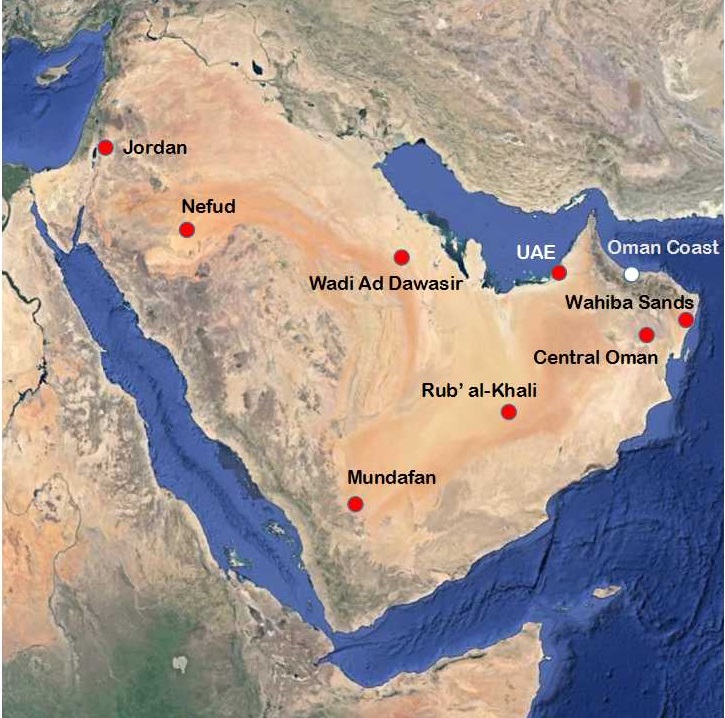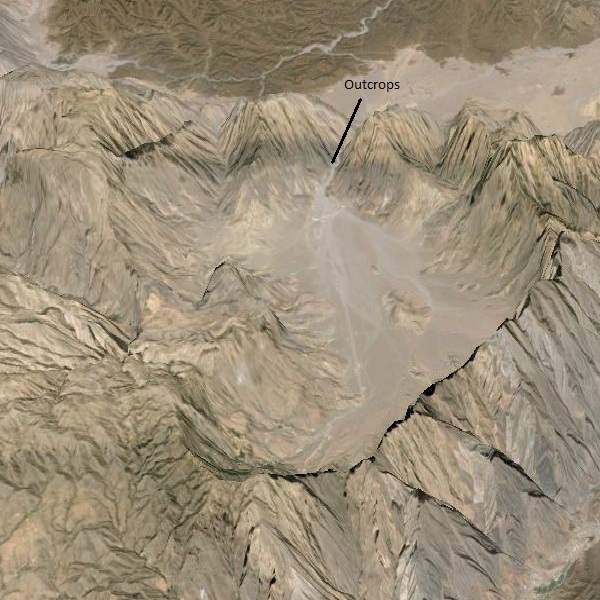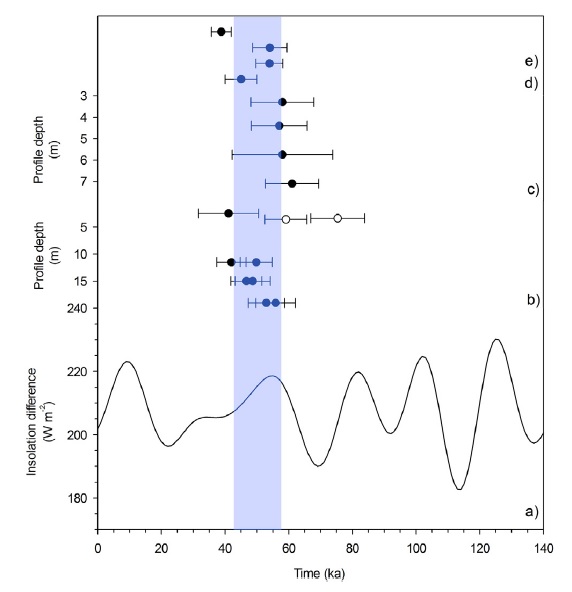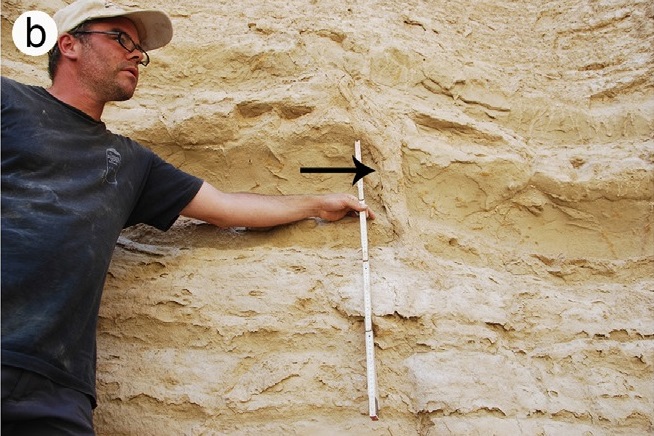Fluvio-lacustrine deposits reveal precipitation pattern in SE Arabia during early MIS 3
|
On a global scale, Marine Isotope Stage (MIS) 3 (ca. 55-30 ka) was characterised by frequent and abrupt changes in climate. At the same time, humans may have dispersed out of Africa and populated the planet. For the Arabian Peninsula, the paucity of suitable terrestrial records leaves our knowldege of the environmental history during this important period enigmatic. Here, we elucidate the enviromental history of part of the Oman Mountains by analysing sediments from Wadi Mistal. |
 |
|
Gösta Hoffmann with individual events layers and rhizoliths (root channels filled with sediment) at Wadi Mistal. |
 |
|
We identify 112 individual fining-upward sequences in the distal facies of the ephemeral lake that was dammed up by a landslide blocking the outlet of the valley. Each of the sequences is interpreted to represent major precipitation events during early MIS 3. According to dating, deposition took place over a period of ca. 5-15 ka. Hence, the major precipitation events occurred every 50-150 years. The time of deposition was likely characterised by strong short-lived precipitation events, poiting towards a climate not so different from that of the present. |
 |


